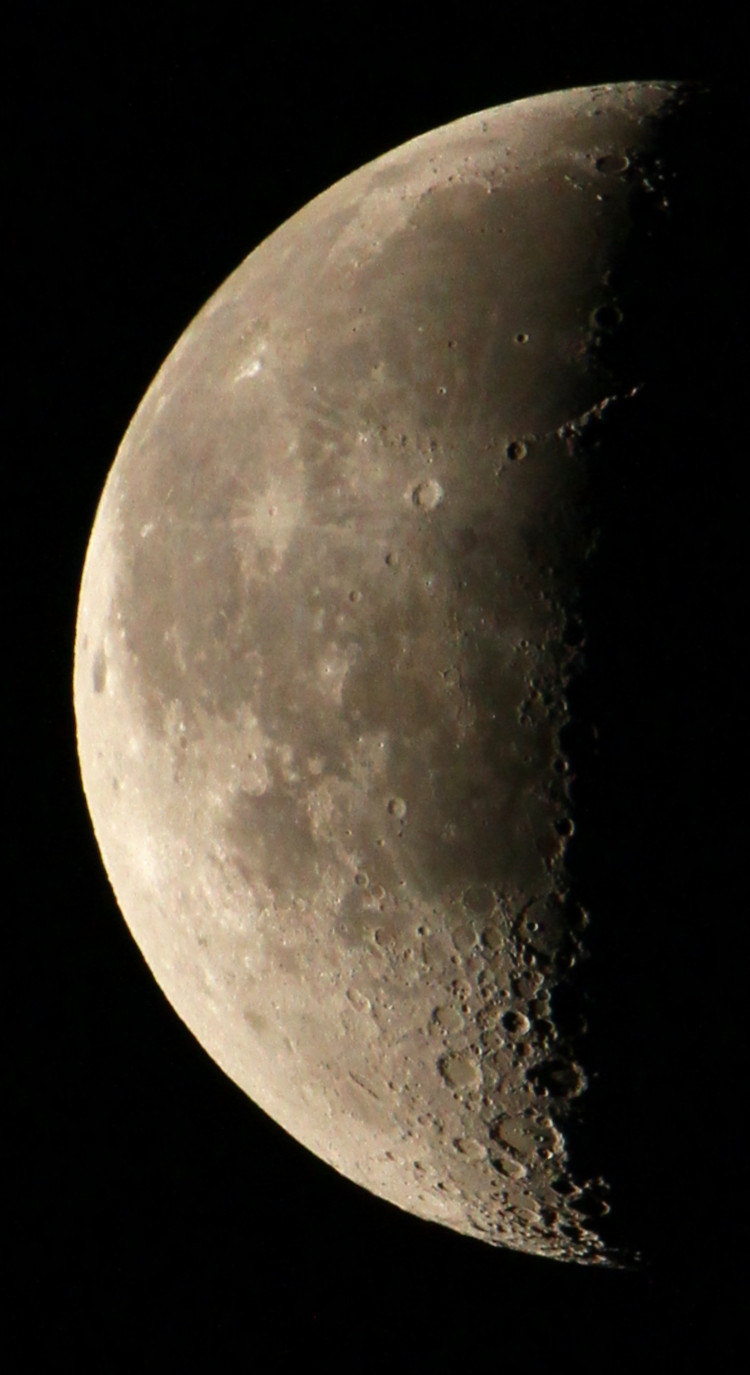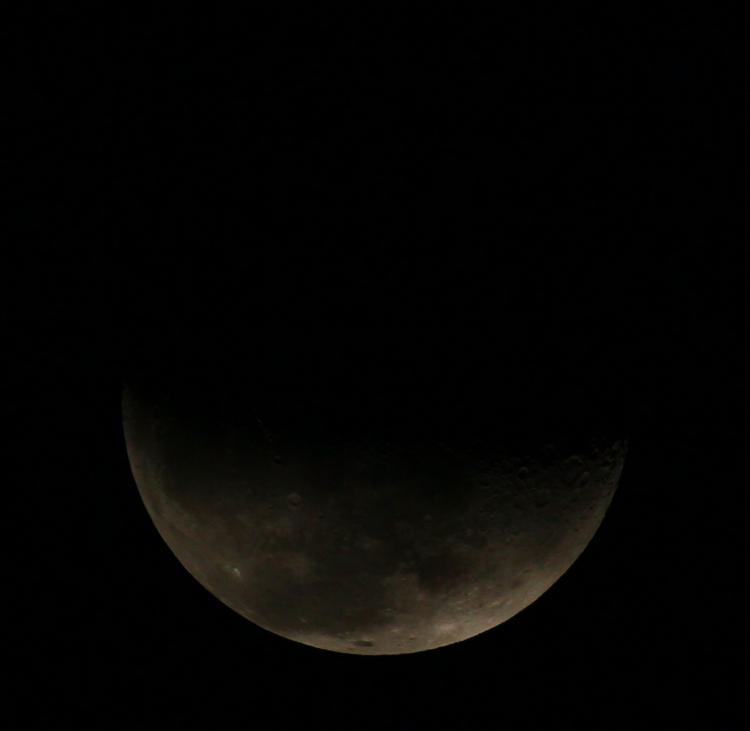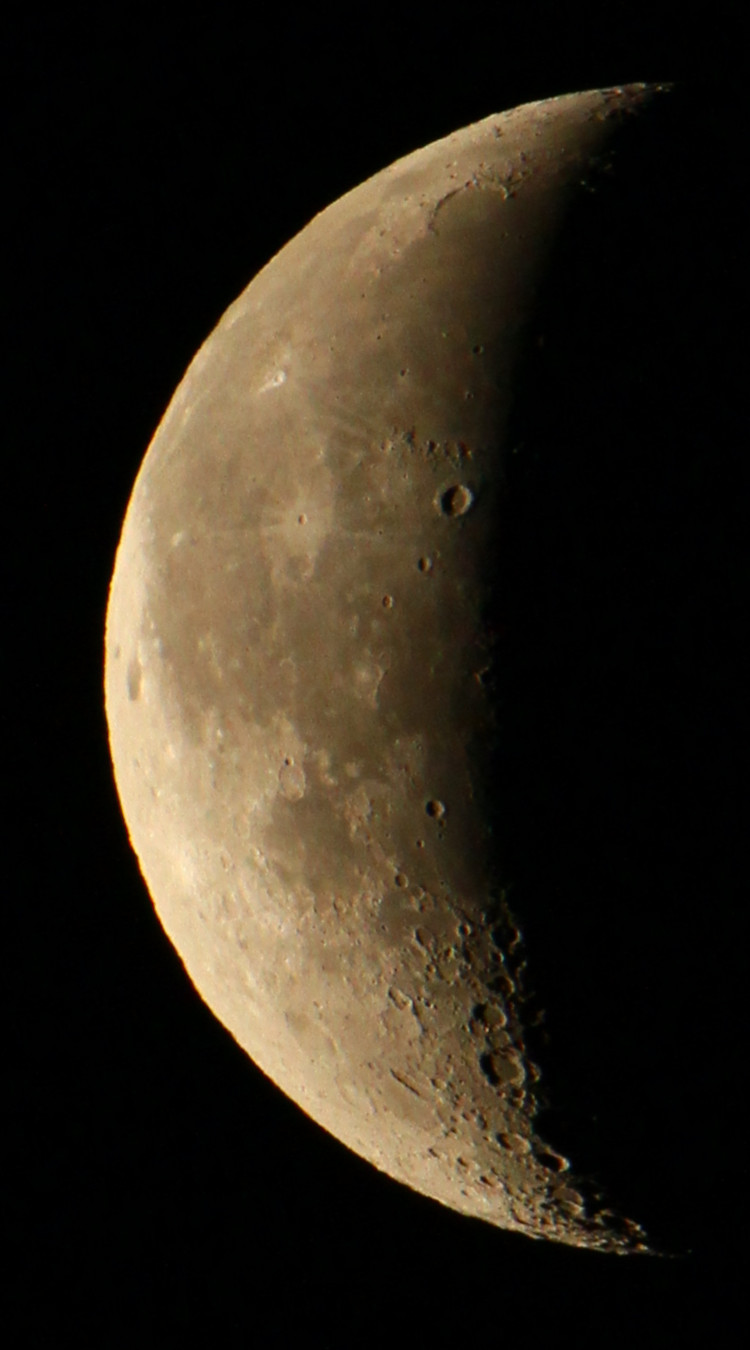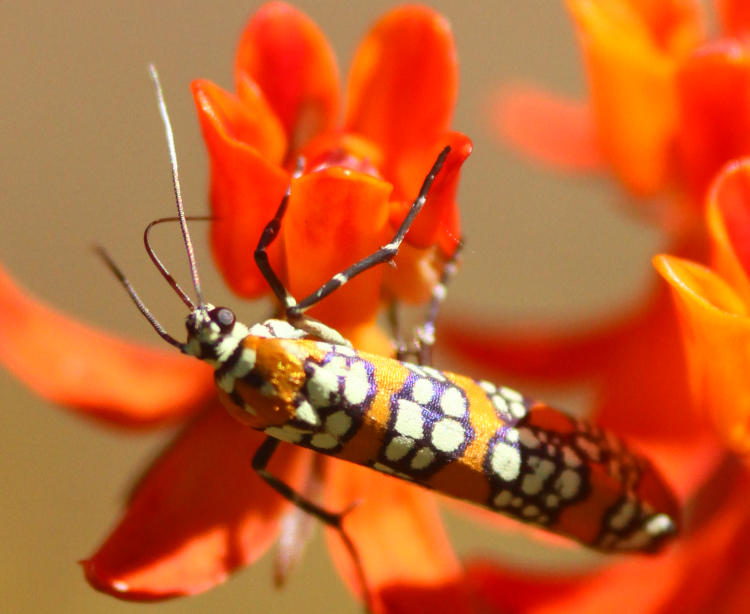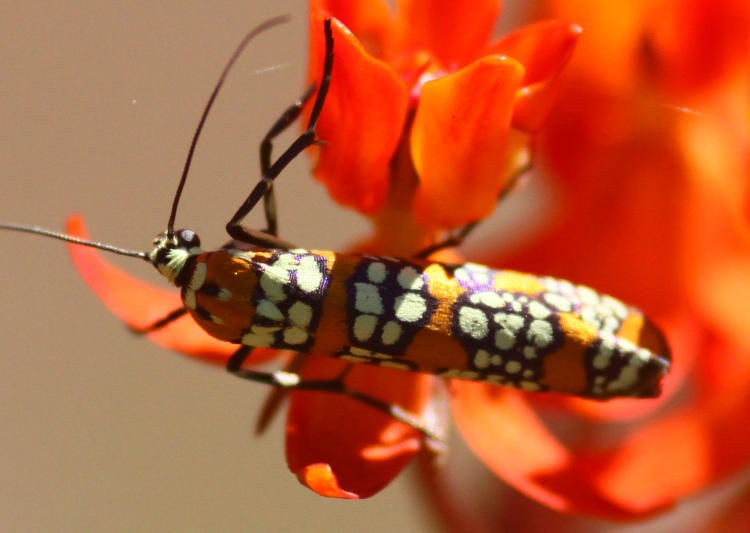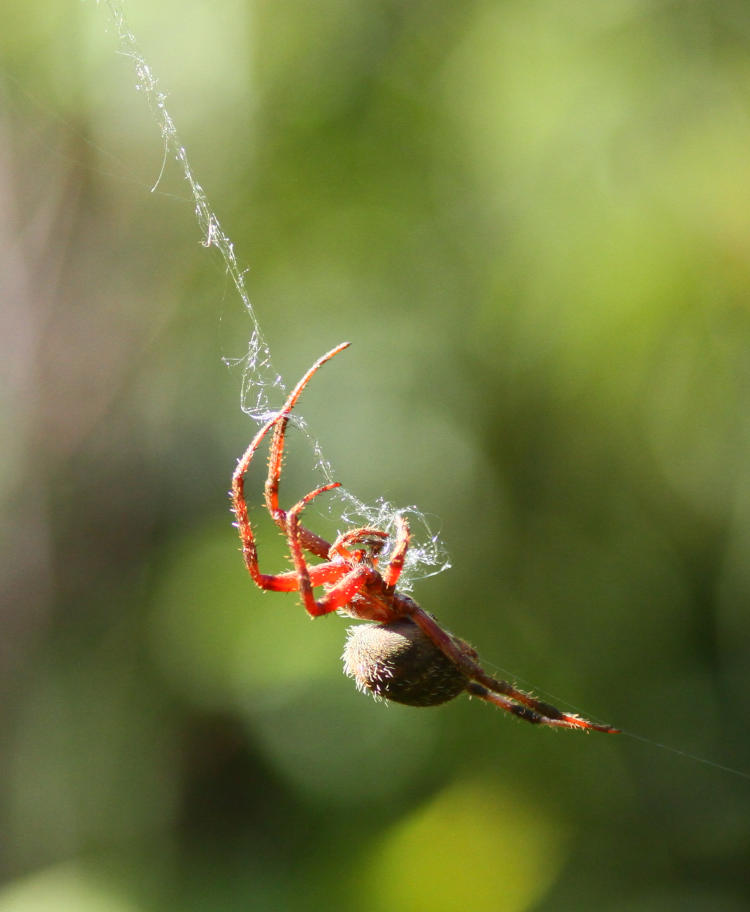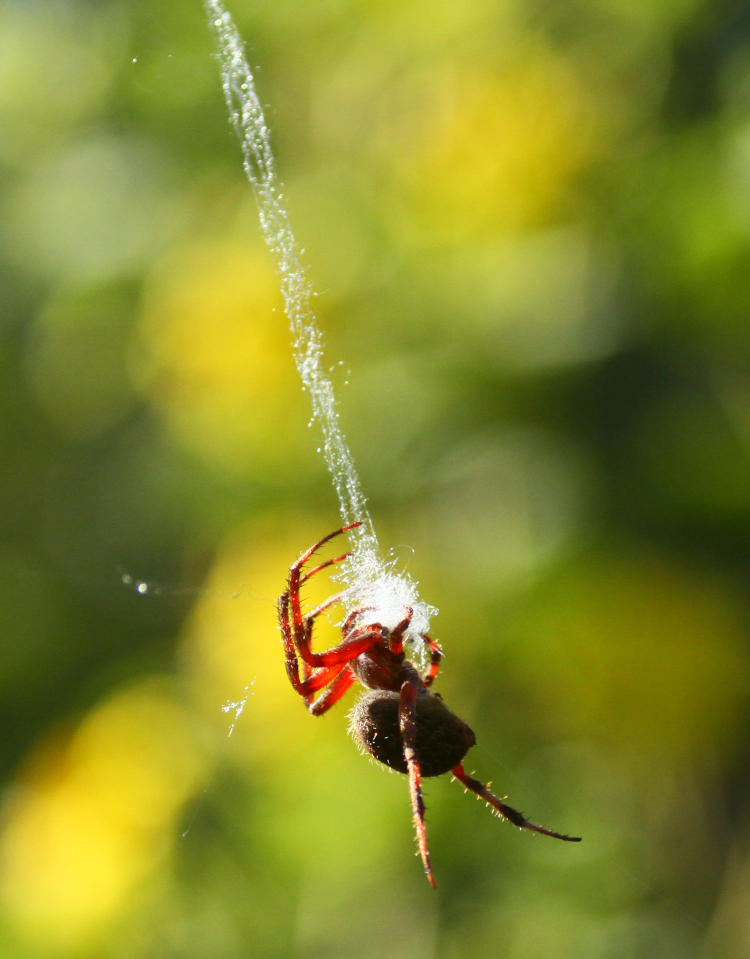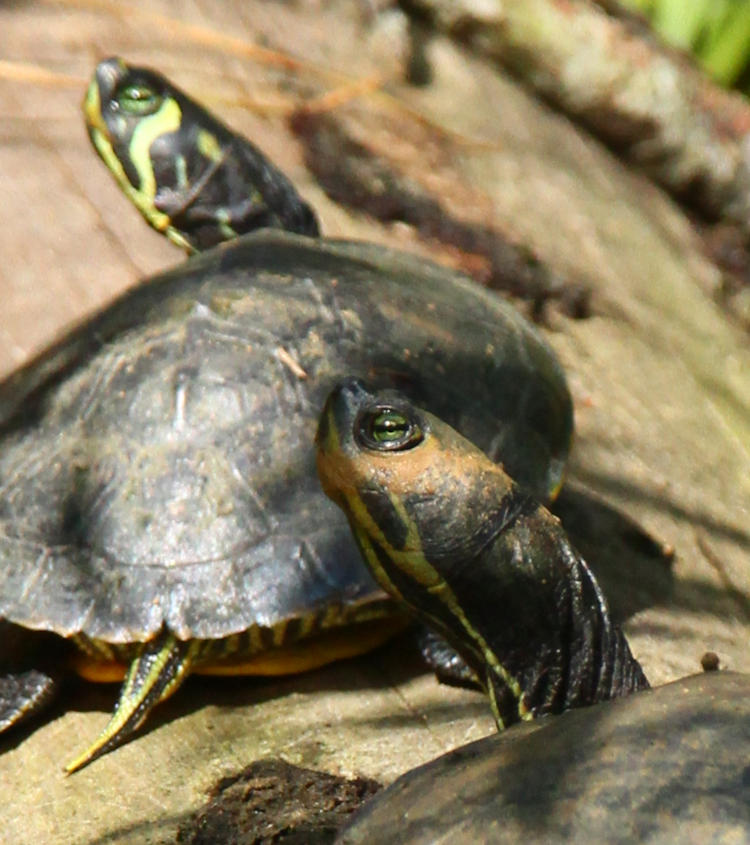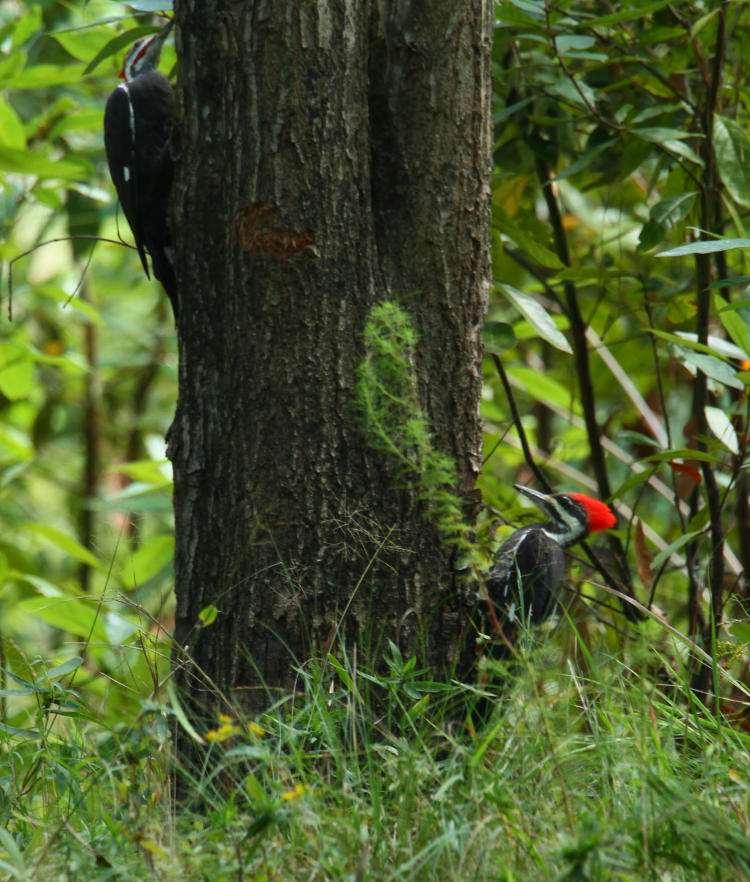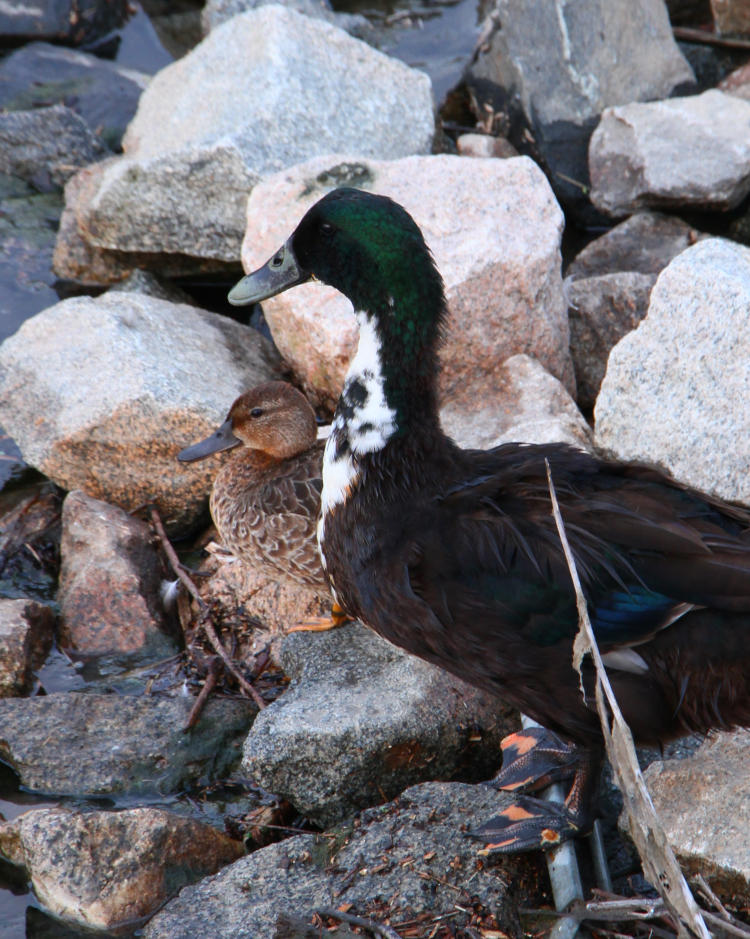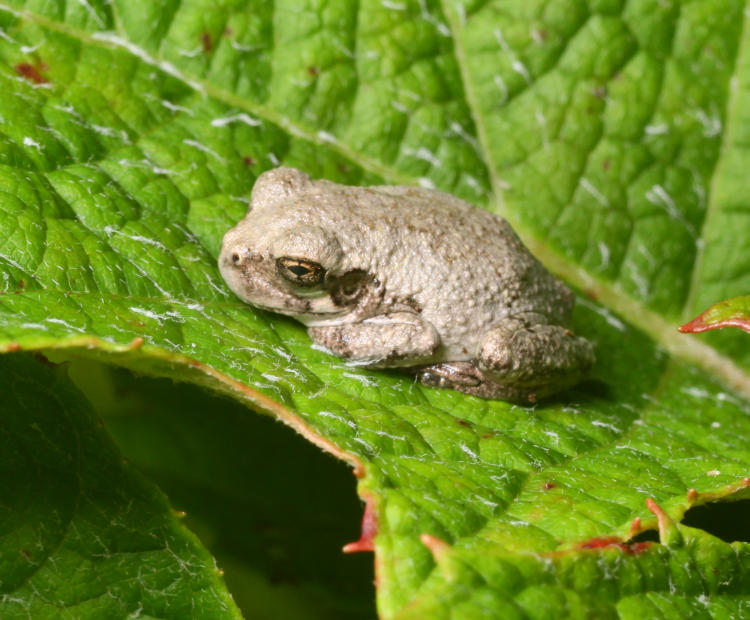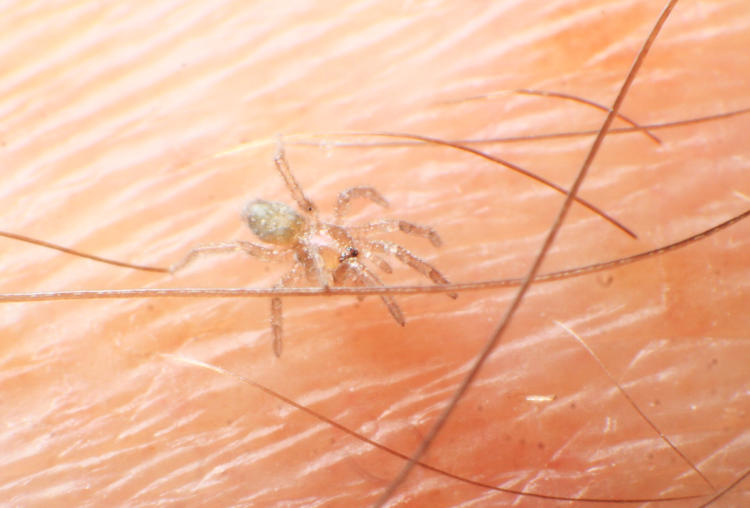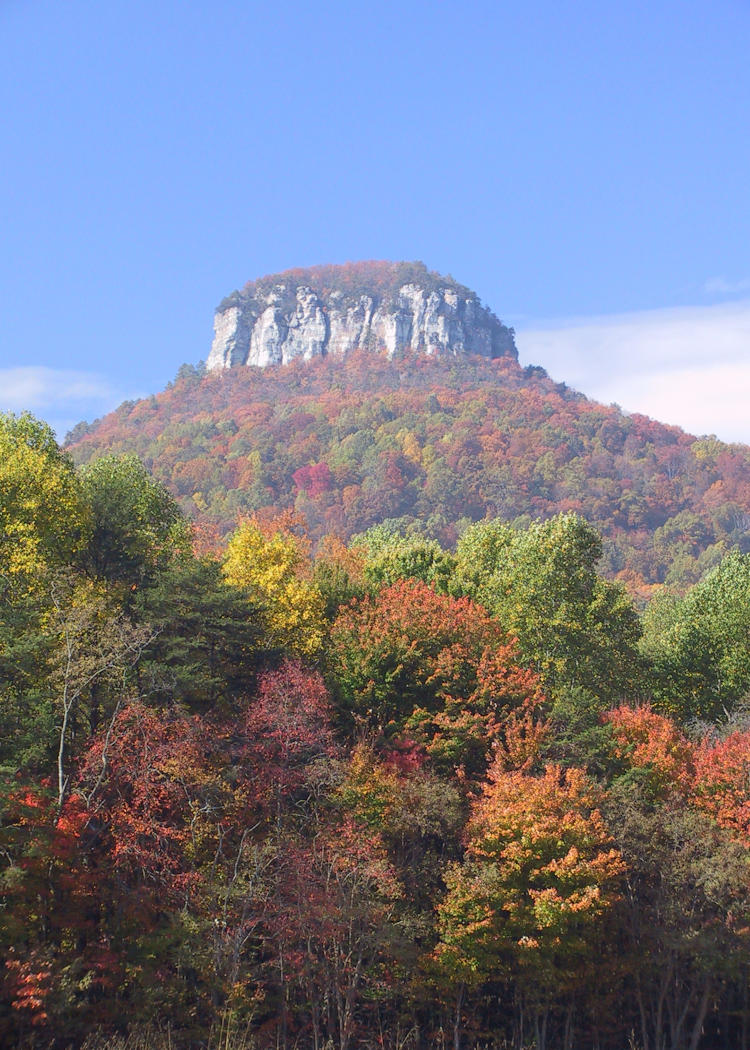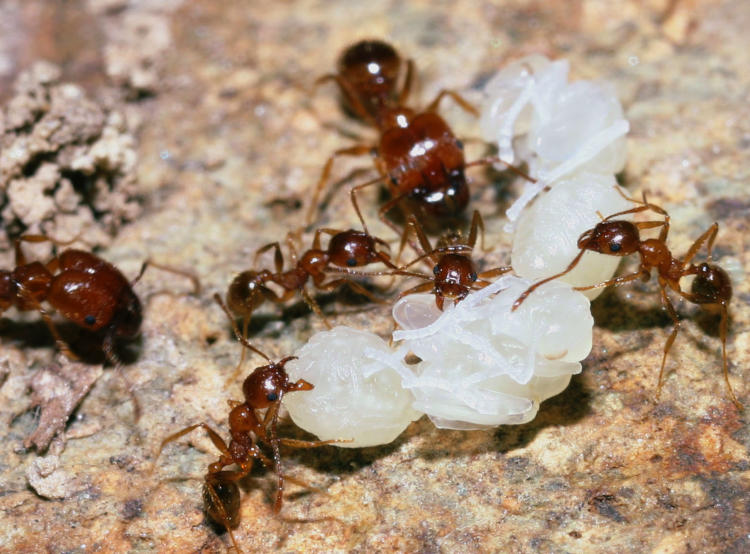Getting back now to posting about the second trip down to Jordan Lake and the, what, twelve pics that will accompany it? And it was a slow day, but I’m also cheating a little.
Right as I was bundled up to leave, through the back window I heard a red-shouldered hawk (Buteo lineatus) calling, obviously quite close. Since I had the camera more-or-less in hand, I tried slipping quietly out the back and looked around carefully, but saw nothing. I was just turning to go back inside when I heard it again, and couldn’t pass up the opportunity – it was clearly within 30 meters. With the help of the second call, I spotted it within a minute, then slowly eased around to obtain clearer views. I needn’t have bothered; the hawk was completely unconcerned with my presence, though granted, I was being slow and quiet, but I was within ten meters and it still wasn’t paying me much attention.
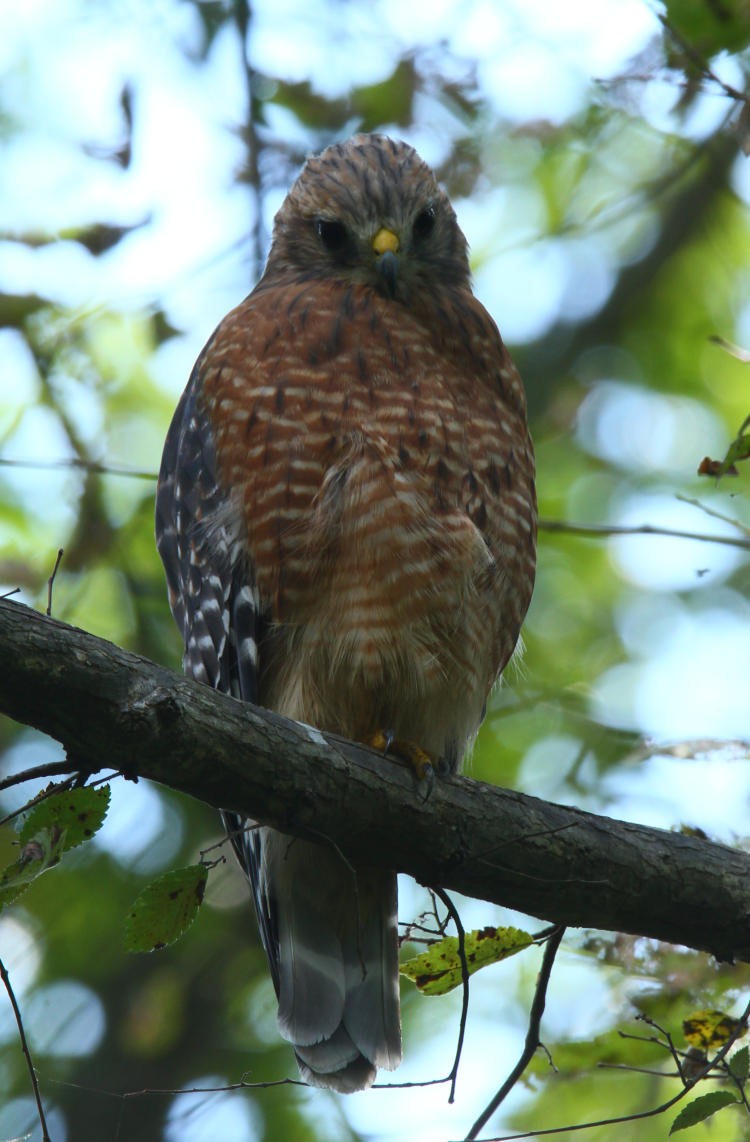
This is cropped, but not by a hell of a lot, and it occurred to me afterward that I had not seen the huge bullfrog by the backyard pond since before this guy’s appearance; frogs and toads are the principle diet of red-shoulders, and while the bullfrog was typically out at night, had the hawk caught it out during the day, the massive meal that it would have provided may well have provoked the hawk to return. I’ll be checking to see if I ever spot the frog again.
And then I went to the lake. The activity was notably absent, with only one or two osprey making any attempts at fishing, and some very distant eagles passing by. But I do want to show this minor little trait that I caught.

This is an osprey (Pandion haliaetus) just after hitting the water – all you’re seeing are the ‘wrists’ or wing joints peeking above the water. Clicking on the image will take you to the full-frame of the image, which shows the wide splash pattern and even the arcs of the returning droplet (to the right) – osprey tend to hit the water hard, often arresting their dive with their wings, while eagles prefer to snatch a fish during a low pass without getting more than their feet wet. When they’re not just harassing osprey into dropping their own catches, that is.

This is not the same osprey, who actually came up empty-taloned after that splash, but another who already had a fish when we arrived (the Inestimable Mr Bugg was along this time.) While deep in the trees quite some distance off, the splash of white that appeared and disappeared at times was visible, if you watched carefully, and so we crept up on it to get a fairly close vantage, while the osprey studiously finished off its fish.
One more, before we move on.

Just one that cruised over without spotting any fish to provide some action shots, but check the focus – both wingtips are softer, but the head and eyes are sharp. That’s what I’d always aim for, but the camera often isn’t that specific. I’m a little surprised that the depth-of-field wasn’t higher than this, though – might have been fairly close, I don’t recall.
Some time later, as things had been too quiet, a great egret (Ardea alba) took off from a distant spot and cruised over the lake, exhibiting a behavior I’ve never seen from a wader before.
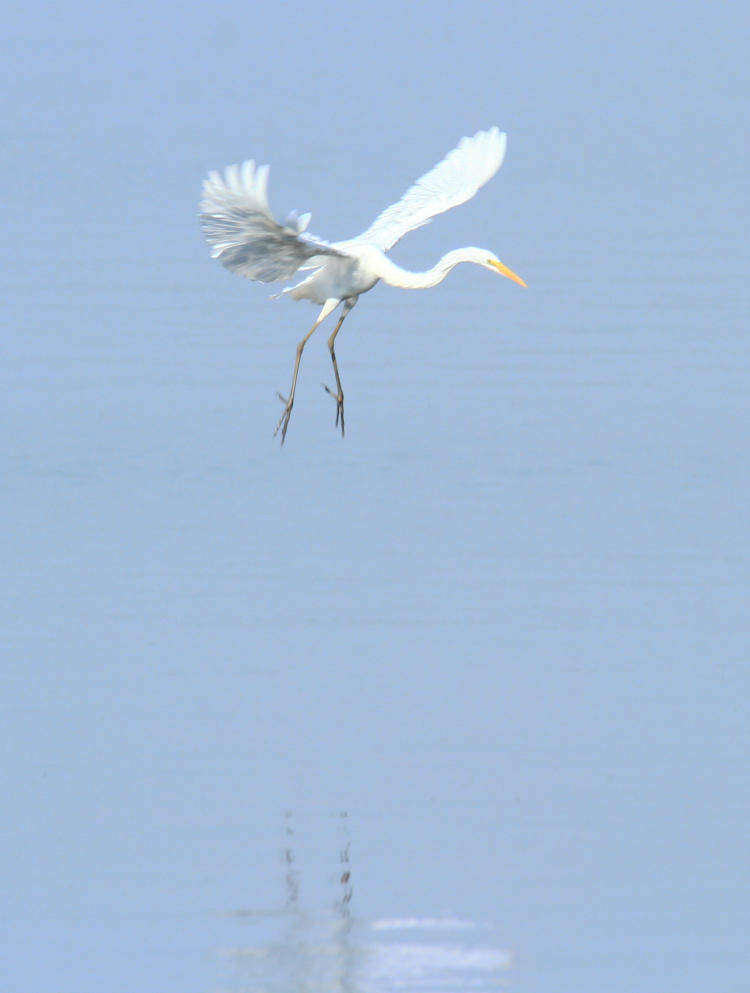
I knew this was over deep water, and the egret suddenly began backing, like the osprey do, and slowed into a near hover over the surface – you can tell from the reflection roughly how high up it was here.

And then, barely moving forward, the egret reached into the water almost negligently and snagged a fish – I was almost unnprepared for this shot, but it came out nice.

with a flex of its body to help arrest its downward motion, the feet slapped water but the egret was already in motion again with its capture, while I blinked and reflected that I hadn’t even thought they were capable of such a maneuver, something you typically see from birds much smaller and more agile that egrets.

And off it went with this smug look on its face, probably thinking I’d been too slow and startled to snag it all; I admit I was pleased to have even seen the stunt, much less captured a decent sequence of it. Bizarre, and I’m left wondering if the egret could have gotten airborne again from water it could not wade within if it had floundered (heh!) the catch and entered the water.
There wasn’t a lot else to see, and we changed to a different location to wait out sunset while seeing what could be found there. Not long after arrival as we explored the lake edge, a great blue heron (Ardea herodias herodias) croaked loudly as it left its position high in the canopy above us, only to fly no more than 20 meters and alight in a treetop again – I failed to see the point, but I was happy to get the shot, given that the light angle was much better for this than anything that might appear over the lake itself.
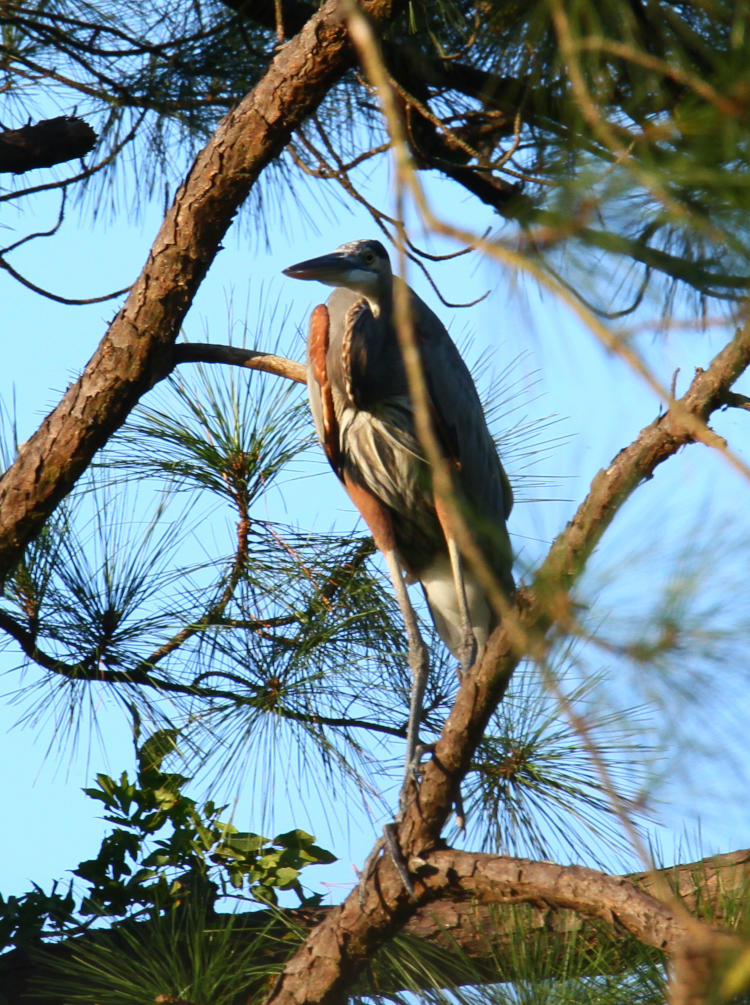
I could have done with a little more light on the face, but hey…
After that things were too quiet and we waited for a sunset that, as usual, performed poorly. That was when I got the spider pics in part two, and otherwise just a few silhouetted birds because we could only see into the west from this new vantage. But I offer a quick illustration.
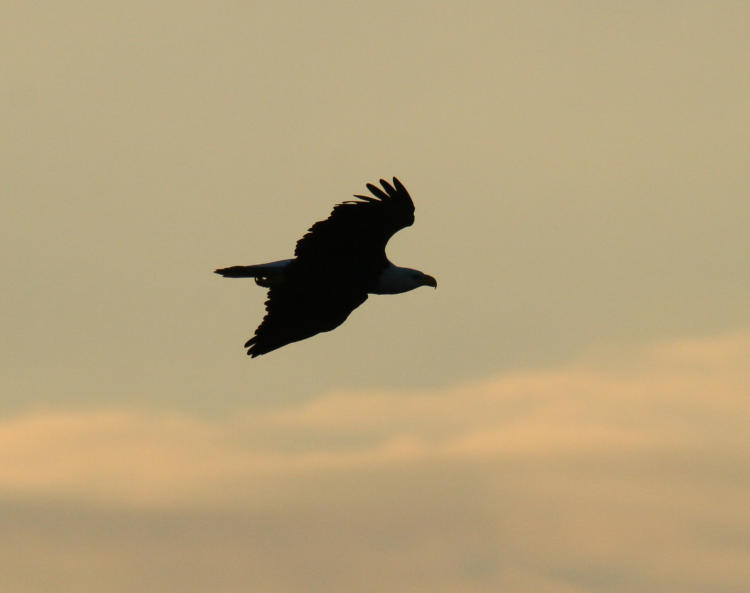
This is a bald eagle (Haliaeetus leucocephalus) passing, able to be identified by the silhouette if you look for a couple of telling details. Big of course, but with a more prominent head and neck than the similar-sized vultures. Wings held flat, though that’s not too evident here, with a slow beat pattern. But most especially the beak, that huge Durante-schnozz that nothing but the eagles have. Now a comparison.
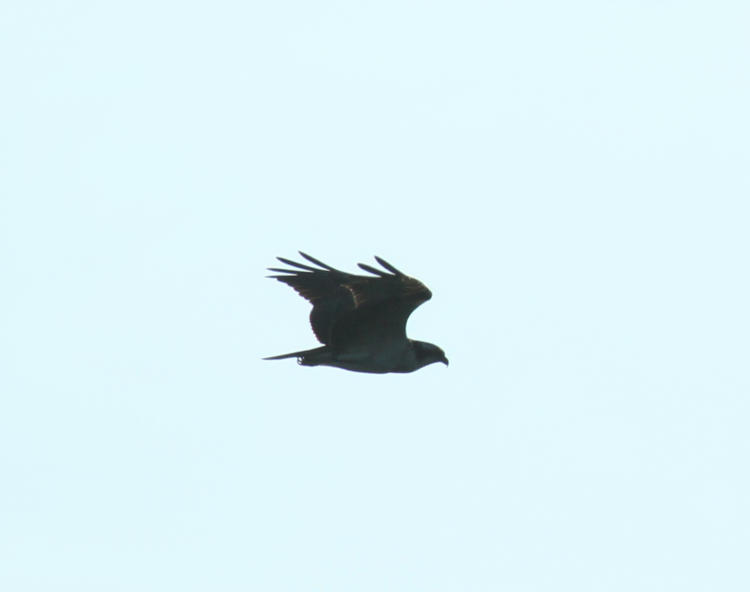
This is an osprey, smaller of course but this can be hard to tell from any distance at all. The wings will also be held flat in a glide, though they tend to glide less often and so the faster wingbeat will be displayed. But the telltale again is the beak, nothing at all like the eagle’s. The wingbeat is comparable to a crow, as is the size, but crows almost never glide or soar and their wingbeat is usually constant – and of course they have a straight, thick beak. But knowing these traits will help identify what you’re seeing even a great distance.
And finally,
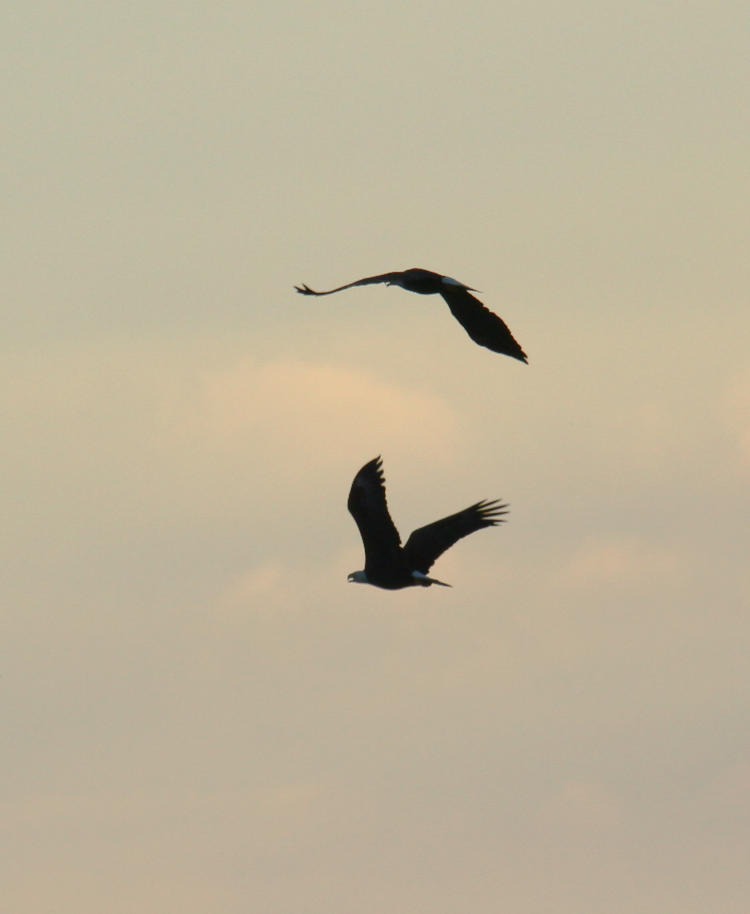
Once again, we saw a pair of adult bald eagles soar off together right around sunset, heading in the same direction as before; I don’t pretend to know why this is, especially when there is often no sign of either earlier in the afternoon, and they don’t always remain together as they cross the lake in a southwesterly direction. But we’ve seen it three or four times now, so I’m going to call it a habit. And it makes for a nice closing image, even when the sky could easily have been better, had it made the effort.






















































